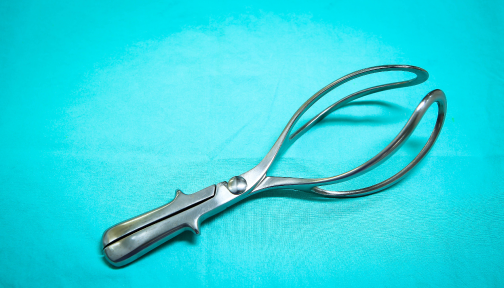Ki Tisa 5779
“Every first issue from the womb is Mine; and all your livestock that produce a male, that which emerges from an ox or a sheep. That which first emerges from a donkey you shall redeem with a lamb, and if you do not redeem it you shall break its neck; all firstborn among your sons you shall redeem. They shall not be seen before Me empty-handed” (Shemos 34:19-20)
These Pesukim describe the Mitzvah of giving one’s firstborn animals to the Kohen and the Mitzvah of Pidyon Haben – the redemption of the firstborn male child of a Yisrael.
The Gemara[1] (Bechoros 47b[2]) explains that the Mitzva of Pidyon Haben only applies to the firstborn child who emerges naturally from the uterus (“Patar Es Harechem”). If he was delivered by means of a Caesarean section, there is no obligation of Pidyon Haben as he was not a Peter Rechem.
What is the Halacha regarding a firstborn child that was delivered by means of forceps? A child delivered in this manner is born the same way as an ordinary vaginal delivery except that the forceps are interposed between the baby and the vaginal walls.
The forceps used in a delivery are comprised of two crossover branches, each with a blade, shank, lock and handle. The blades each have two curves; one outward cephalic curve and another upward pelvic curve. During delivery, the blades are introduced into the vagina one after another and positioned so that they straddle the fetus’s head. When the mother experiences a contraction, the forceps are used to gently ease the head outwards. Once the head has emerged, the forceps are not needed to deliver the rest of the body.
The Gemara in Maseches Chullin (70a) discusses the law of a firstborn animal (Bechor) that is born while something[3] interferes between its head and the vagina (a “Chatzitza”). Generally, the first animal to ‘emerge from the birth canal’ (the “Peter Rechem”) of a Kosher animal must be given to a Kohen. In this case, where most of the head does not touch the uterus the Gemara doubts whether it is considered a “Peter Rechem” and does not rule conclusively on this question. The animal in such a case is therefore considered a “Safeik Bechor”. (See Rambam Bechorim 4:17 and Tur YD 315)
If the law of the firstborn human male is the same as a firstborn animal, then the forceps used in delivery should be considered a Chatzitza and the child should be a Safeik Bechor. This is the opinion of the Avnei Nezer (YD 391-394) and Chelkas Yoav (1:26), and there would therefore be no obligation to redeem a firstborn son delivered with forceps since a Safeik Bechor is exempt from Pidyon Haben.[4]
However, many Poskim contend that a birth involving a forceps delivery does not exempt one from the obligation of Pidyon Haben:
Rav Moshe Feinstein zt”l (Igros Moshe YD 3:125) argued that the comparison between the Bechor of an animal and the Bechor of a human is flawed. A Bechor of an animal has no holiness at all in utero – it only assumes its status[5] upon delivery and it is the emergence from the uterus via the vagina that renders it holy. A Chatzitza interferes with that process since the animal is not in contact with the walls of the vagina during delivery.
In contrast, the human Bechor has no inherent Kedusha (holiness) at all, just an obligation to redeem him by paying five Selaim to a Kohen. Since there is no inherent Kedusha (or, as Rav Moshe describes it, “no Din on his Guf”), there is no reason to ascribe any importance to the way that he emerges from the uterus. Moreover, the obligation of Pidyon Haben begins only after the first thirty days of his life and not immediately at birth. Therefore, the manner of birth cannot be a factor in creating the obligation of Pidyon Haben. Rather, this obligation is brought about by Day 30 (“Yom haShloshim”), although only in a male child who is a Peter Rechem. The status of Peter Rechem is not dependent upon actual contact with the vaginal walls during delivery but only upon delivery through the vagina and a Chatzitza will not invalidate the child’s status of Peter Rechem.
Rav Moshe therefore concluded that Chatzitza bears no relevance to the Mitzva of Pidyon Haben[6] and a firstborn child delivered by means of forceps would absolutely require a Pidyon Haben.
Rav Moshe Shternbuch shlit”a (Teshuvos Vehanhagos 1:665) concurs with the Igros Moshe[7]. He argues that the determining factor in the obligation of Pidyon Haben is whether there was a “Leidah” – a regular birth. A birth by Caesarean section cannot be considered a Leidah – it is merely a “means of extracting a fetus from its mother”. A birth by forceps delivery, on the other hand, most certainly is considered Leidah, and the Chatzitza of the forceps (or any other Chatzitza) would not change that.
When it comes to the Bechor of an animal, however, the Kedusha does not depend on Leidah but rather on an unimpeded emergence from the uterus via the vagina. In the case of Chatzitza, the animal did not have full contact with the vagina during birth, so it is not considered a Peter Rechem and would not assume the status of Bechor.
Rav Shmuel Engel (Shu”t 4:9) argued that even if the concept of Chatzitza would apply to the laws of Pidyon Haben, forceps could not possibly constitute a Chatzitza. One of the primary laws of Chatzitza is that a person has to be “Makpid” (disturbed) by them. In the case of forceps delivery, the woman giving birth recognizes the forceps as a necessary medical device and she isn’t Makpid so they cannot be considered a Chatzitza. Other Poskim explicitly reject this claim, as the mother’s attitude toward the forceps does not define the Chatzitza. The only relevant factor is whether the forceps interfere between the fetus and the vagina. (See Igros Moshe ibid. and Shu”t Yabia Omer 9 YD 26)
Rav Ovadia Yosef zt”l (Shu”t Yabia Omer ibid.) cites numerous Poskim (including the Rogachover Gaon in Tzafnas Paneach 7) who argue that the entire question of a forceps delivery being considered a Chatzitza is misplaced. The Chatzitza that the Gemara is discussing is something that interferes between the fetus and the uterus during birth[8]. Forceps are only applied after the baby’s head has entered the vagina and they do not enter the uterus at all and cannot be considered a Chatzitza. According to these Poskim, there is no question at all whether a firstborn male delivered using forceps would be obligated in Pidyon Haben.
[1] See also Shulchan Aruch, YD 305:24
[2] There is in fact an argument in the Gemara about this point.
[3] Such as a leaf. It also could have become tangled in its placenta or with another fetus.
[4] The Avnei Nezer and Chelkas Yoav (quoting contemporary Poskim of his generation) do however recommend that the child be redeemed without reciting a Bracha. This is because this ruling is not found in any of the earlier works of the Poskim. The five Selaim can be given to the Kohen as a “Matana Al Menas Lehachzir” – “a gift given on condition that it be returned”.
[5] It must be given to a Kohen who must offer it as a Korban and eat its meat in Yerushalayim.
[6] Rav Moshe zt”l supported his contention by the fact that not one of the Rishonim, early Acharonim or Poskim applied the Halachos of Chatzitza to Pidyon Haben.
[7] He also cites the Brisker Rov zt”l and Tchebiner Rov zt”l as ruling similarly and attests that it is the prevailing Minhag.
[8] Stated differently, the status of Peter Rechem is conferred upon the exit of the fetus from the uterus (the Rechem) via the cervix into the vagina. The Gemara’s discussion of Chatzitza is when something interferes between the fetus and the uterus as it passes through the cervix.















Add comment